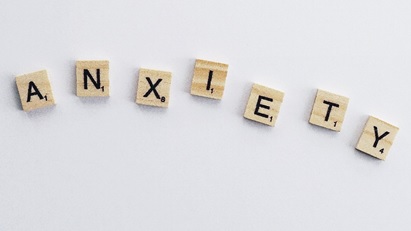Anxiety
Anxiety, or generalized anxiety disorder (GAD), is a mood state that produces worry, fear, apprehension, somatic symptoms, and a constant feeling of being overwhelmed7
Someone with anxiety feels the tension of impending danger, catastrophe, or misfortune, irrelevant to the fact whether the threat is real or imagined or internal or external. In general, people with GAD have a persistent, excessive, and unrealistic worry6,7.
Several factors that contribute to anxiety include:6
- stress
- physical condition or other comorbidities (diabetes, depression)
- genetics
- environmental factors
- substance abuse
- increased hours of work2

The veterinary profession is no stranger to this mood state: studies have shown that veterinarians, especially small animal and mixed-practice practitioners, are prone to anxiety2,3,4.
Veterinary surgeons in the UK experience high levels of anxiety and have lower levels of positive mental well-being compared to the general population1. In Australia, veterinarians, especially veterinary associates, have high DASS anxiety scores4.
A study on Australian veterinarians noticed two periods of higher anxiety:4
- First period: observed during initial 5 years after graduation, when veterinarians face uncertainty regarding the application of their theoretical knowledge and practical skills
- Second period: observed between 10-15 years after graduation, when veterinarians have increased responsibilities such as practice ownership and family responsibilities

Anxiety in the veterinary profession should not be taken lightly as individuals with anxiety are more likely to develop burnout5. Let’s improve the working conditions and working environment of our veterinarians and strive for a healthier profession.

Sources:
- Bartram, D.J., Yadegarfar, G., & Baldwin, D.S. (2009). A cross-sectional study of mental health and well-being and their association in the UK veterinary profession. Social Psychiatry and Psychiatric Epidemiology, 44(12),1075-1085. http://dx.doi.org/10.1007/s00127-009-0030-8
- Fritschi, L., Morrison, D., Shirangi, A., & Day, L. (2009). Psychological well-being of Australian veterinarians. Australian Veterinary Journal, 87(3), 76-81. http://dx.doi.org/10.1111/j.1751-0813.2009.00391.x
- Gardner, D.H. & Hini, D. (2006). Work-related stress in the veterinary profession in New Zealand. New Zealand Veterinary Journal, 54(3), 119-124. http://dx.doi.org/10.1080/00480169.2006.36623
- Hatch, P.H., Winefield, H.R., Christie, B.A., & Lievaart, J.J. (2011). Workplace stress, mental health, and burnout of veterinarians in Australia. Australian Veterinary Journal, 89(11), 460-468. http://dx.doi.org/10.1111/j.1751-0813.2011.00833.x
- Koutsimani, P., Montgomery, A., & Georganta, K. (2019). The relationship between burnout, depression, and anxiety: A systematic review and meta-analysis. Frontiers in Psychology, 10, 284. http://dx.doi.org/10.3389/fpsyg.2019.00284
- Munir, S. & Takov, V. (2019, November 22). Generalized Anxiety Disorder. StatPearls Publishing LLC. https://www.ncbi.nlm.nih.gov/books/NBK441870/
- Pam, N. (2013, April 7). Anxiety. Psychology Dictionary. https://psychologydictionary.org/anxiety/